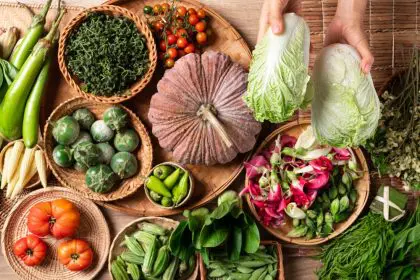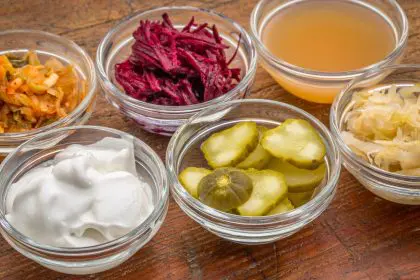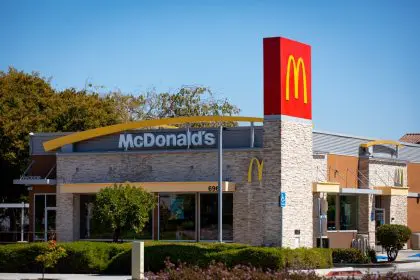The quest for sustained energy amid packed schedules often leads to nutritional compromises

For busy professionals, eating healthy while managing a hectic lifestyle can seem overwhelming. However, the Women’s Health High-Protein Meal Prep Manual offers a practical solution for optimizing nutrition without sacrificing precious time. By strategically planning meals with a focus on high-protein options, you can transform your energy levels, enhance productivity, and improve overall well-being, even in the busiest of times.
Understanding protein requirements
Protein is one of the most vital nutrients our bodies need, particularly for maintaining muscle mass and supporting metabolic functions. The amount of protein an individual requires varies based on factors such as weight, activity level, and age. While the general recommendation is about 0.8 grams of protein per kilogram of body weight, athletes or those engaged in intense physical activity may require more.
The timing and quality of protein also play crucial roles in how well your body utilizes this macronutrient. Consuming protein throughout the day in smaller, balanced portions is more effective than loading up on a large amount in one meal. Additionally, it’s important to choose high-quality protein sources such as lean meats, legumes, dairy, and plant-based options to maximize nutritional benefits.
The science of meal timing
Strategic meal timing can make a significant difference in how your body processes and uses protein. Distributing protein evenly throughout the day is key for sustaining energy levels and preventing muscle breakdown. After a workout, your body is particularly primed to absorb protein, so consuming a protein-rich meal or snack in the post-workout window is essential for recovery.
Morning protein intake is also crucial. Including protein at breakfast helps stabilize blood sugar levels, reducing cravings and providing long-lasting energy throughout the morning. For those looking to optimize recovery, evening meals should contain adequate protein to support muscle repair during sleep. Snacks between meals should not be overlooked; they can help maintain a consistent supply of protein to your muscles.
Weekly meal prep blueprint
Meal prepping is a game-changer for busy professionals, especially when it comes to high-protein meals. By preparing your meals ahead of time, you eliminate the guesswork and last-minute stress associated with finding healthy food. A good starting point is setting aside time each weekend for meal planning, grocery shopping, and batch cooking.
Begin by creating a meal plan for the week, taking into account protein-rich recipes that can be easily prepared in large quantities. When shopping, prioritize whole foods like fresh vegetables, lean meats, grains, and legumes. Batch cooking key ingredients, such as grilled chicken, roasted vegetables, or quinoa, allows for flexibility throughout the week. Once cooked, organize meals in labeled containers and store them in the fridge or freezer for easy access.
Core protein-rich recipes
A few simple, high-protein recipes can make all the difference in your weekly meal prep. One option is the open-face frittata sandwich, offering around 22 grams of protein per serving. Another easy meal is red lentil stew, which provides 18 grams of protein, making it perfect for those seeking plant-based options. For a quick breakfast or snack, power protein shakes are an excellent choice, delivering up to 20 grams of protein in each serving. If you’re looking for a filling lunch or dinner, try chicken-broccoli salads (25g of protein) or tuna-avocado bowls (24g of protein), which are both easy to assemble and nutrient-dense.
These recipes provide a solid foundation for your meal prep and can be customized to your taste preferences. The key is to choose protein-rich ingredients that will satisfy your hunger and keep you energized throughout the day.
Kitchen efficiency strategies
Time-saving techniques are essential for anyone trying to prepare healthy meals while managing a busy schedule. One of the most effective strategies is multi-tasking during cooking. For example, while your chicken is grilling, you can be chopping vegetables or preparing a protein shake. Another useful tip is to focus on one-pan meal preparations. These dishes allow you to cook multiple ingredients together, saving time on cleanup and reducing the number of dishes to wash.
Batch protein cooking is another way to save time. Instead of cooking protein every day, grill or bake several servings at once and store them for later use. Additionally, strategic ingredient overlap ensures that the ingredients you buy can be used across different meals. For example, the chicken you prepare for a salad could also be used in a stir-fry or sandwich the following day.
Energy optimization results
The impact of high-protein meal prep on energy levels is remarkable. Many individuals who incorporate these practices into their routines report a noticeable improvement in their energy and overall performance. Protein-rich meals help stabilize blood sugar levels, preventing energy crashes and enhancing focus throughout the day.
Athletes and fitness enthusiasts also find that protein helps them recover more quickly from workouts. By strategically consuming protein at the right times, recovery periods are shortened, allowing for more effective training. In addition to physical benefits, meal prepping high-protein meals also contributes to better appetite control. With consistent, balanced meals, hunger pangs become more manageable, reducing the likelihood of overeating or reaching for unhealthy snacks.
While these changes may not happen overnight, the long-term benefits of high-protein meal prep include not only sustained energy but also enhanced mood patterns, better sleep, and improved overall well-being.
Common challenges addressed
While meal prepping and high-protein eating have significant benefits, they also come with their own set of challenges. One of the most common hurdles is time management. Many people struggle to find time to plan meals, shop for groceries, and prepare meals in advance. However, once a routine is established, meal prepping becomes more efficient and less time-consuming.
Ingredient availability is another concern, especially if you live in an area where certain protein-rich foods are not easily accessible. The solution is to create a flexible shopping list that includes a variety of protein sources, including plant-based options. Another challenge is cost. High-quality protein sources can be expensive, but by purchasing in bulk and planning meals carefully, it’s possible to optimize your grocery budget.
Taste fatigue is another issue for some, especially when meal prepping the same meals week after week. To combat this, try rotating recipes and experimenting with different flavors and seasonings to keep things interesting. With these practical strategies, high-protein meal prepping can become a sustainable and rewarding way to stay energized and healthy.











